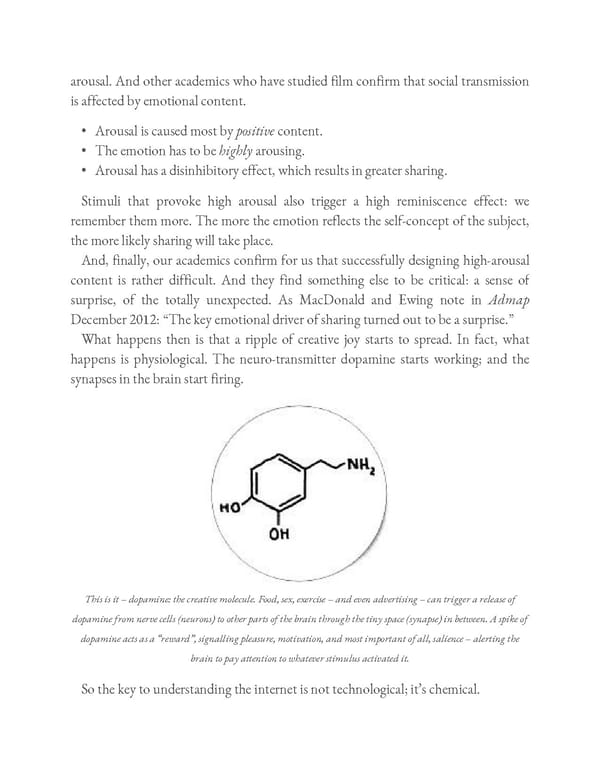arousal. And other academics who have studied film confirm that social transmission is affected by emotional content. • Arousal is caused most by positive content. • The emotion has to be highly arousing. • Arousal has a disinhibitory effect, which results in greater sharing. Stimuli that provoke high arousal also trigger a high reminiscence effect: we remember them more. The more the emotion reflects the self-concept of the subject, the more likely sharing will take place. And, finally, our academics confirm for us that successfully designing high-arousal content is rather difficult. And they find something else to be critical: a sense of surprise, of the totally unexpected. As MacDonald and Ewing note in Admap December 2012: “The key emotional driver of sharing turned out to be a surprise.” What happens then is that a ripple of creative joy starts to spread. In fact, what happens is physiological. The neuro-transmitter dopamine starts working; and the synapses in the brain start firing. This is it – dopamine: the creative molecule. Food, sex, exercise – and even advertising – can trigger a release of dopamine from nerve cells (neurons) to other parts of the brain through the tiny space (synapse) in between. A spike of dopamine acts as a “reward”, signalling pleasure, motivation, and most important of all, salience – alerting the brain to pay attention to whatever stimulus activated it. So the key to understanding the internet is not technological; it’s chemical.
 Ogilvy on Advertising in the Digital Age Page 142 Page 144
Ogilvy on Advertising in the Digital Age Page 142 Page 144